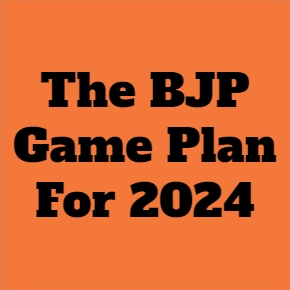

By Sunil Garodia
First publised on 2023-12-13 09:00:59
There are many ways to look at the change of guard by the BJP in Madhya Pradesh, Rajasthan and Chhattisgarh. Critics would like to see it as an attempt by the high command, which effectively means PM Modi, Amit Shah and to a lesser extent, J P Nadda, to cut heavyweight regional satraps to size. It could be one of the reasons, which is reinforced by the fact that none of the new chief ministers selected in all three states are known to be close to the said satraps. But assuming it to be the only, or the main, reason for the exercise is to ignore the larger intent behind it.
The current set up in the BJP is well aware of the failure of the India Shining campaign of 2004. It knows that highlighting achievements takes the incumbent only thus far and no further. Plus, the changes seek to avoid the law of diminishing returns that might set in if an old face in charge of a state.The awesome BJP election machine works on the ground. It takes into consideration the caste and regional factors while deciding how to proceed. Thus, the decision to change state-level leadership is a well thought out one to aid the election machine prepare the blueprint for 2024.
Consider the facts. The BJP has a tribal face in Chhattisgarh. This is after the huge tribal outreach by the party before the state elections. The tribal vote traditionally went to the Congress or the regional tribal parties. The BJP managed to turn it in its favour this time. So it appointed Vishnu Deo Sai as chief minister. It also appointed two deputies in Arun Sao (OBC) and Vijay Sharma (Brahmin). In Madhya Pradesh, it has Mohan Yadav, an OBC as chief minister. He has Jagdish Devda (SC) and Rajendra Shukla (Brahmin) as deputies. In Rajasthan, Bhajan Lal Sharma, a Brahmin, is chief minister with Diya Kumari (Rajput) and Prem Chand Bairwa (Dalit) as deputies. All these combinations cover most of the caste base. Further, Sai's appeal to tribal communities will extend to Madhya Pradesh, Odisha and Jharkhand, states contagious to Chhattisgarh, while Yadav will appeal to voters in UP and Bihar. In addition to this, the fact that all the three chief ministers are close to the RSS shows that the ideological mentor is putting its weight behind the changes.
The BJP game plan for 2024 is clear. It is going to heavily push 'Modi ki guarantee', cash-in on PM Modi's unique and ever-growing appeal with a large section of voters, encash the dividend arising out of the building the Ram Temple in Ayodhya and the fulfillment of the manifesto promise of abrogating Article 370, widen its appeal to all castes by covering all bases in appointing chief ministers and their deputies, shake up the party organization in states as well as headquarters to bring in people close to the RSS, use the huge infrastructure and reach of the RSS to make inroads in areas where the party is not strong, while all the time highlighting its achievements in the last 10 years and painting the opposition as an opportunistic and divided lot. That, the party will hope, will help it achieve the target it has set for itself in 2024 - that of garnering 35 crore votes.











